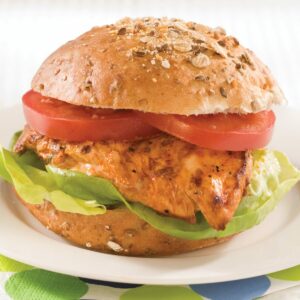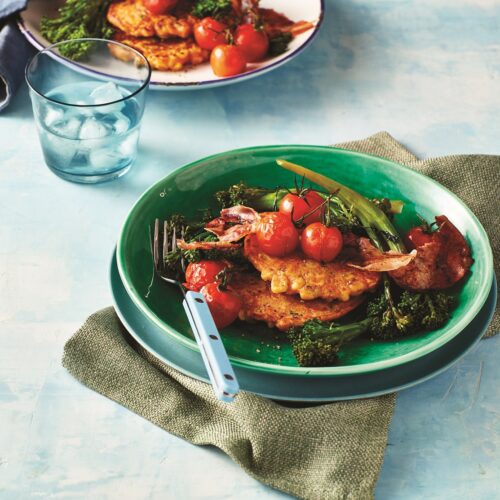
Protein plays a role in everything from muscle growth to supporting your immune system. But if you don’t eat meat, where can you find alternative sources of this essential nutrient? Nutritionist Vanessa Furlong investigates.
Ask people what the best sources of protein are and they will say red meat or fish. These are obviously off the menu for vegetarians and vegans but fortunately, plant proteins offer a nutritious alternative.
Protein has numerous functions in the body, but most significantly this macro-nutrient plays a vital role in muscle growth and tissue repair. Protein is essential for good health.
How does plant protein differ from animal protein?
You can meet your protein needs through plant sources, but meat is undoubtedly the richest source of protein. For example, 100g chicken breast provides 22g protein, while 100g plain tofu provides nine to 14g protein. The digestibility of meat protein is also higher (90-99 per cent) than plant protein (70-90 per cent) due to the plant cell walls being more resistant to digestion.
Both sources of protein contain significant amounts of essential nutrients. Red meat is rich in iron, zinc and vitamin B12 – three nutrients that non-meat eaters are at risk of being deficient in – while plant protein is rich in fibre and antioxidants.
Animal protein is a complete protein, meaning it provides all nine essential amino acids, while some plant proteins may lack one or more essential amino acids.
Plant proteins are typically derived from soybeans and pulses. Soy protein products are complete proteins, whereas pulses are incomplete sources of protein.
It’s important to note, however, that it is possible to get all the essential amino acids by combining a variety of plant proteins (like legumes and whole grains). Keep in mind that you don’t have to combine plant protein-containing foods within the same meal. These foods only need to be combined over the course of a day, or even a week, so be sure to eat a wide variety of legumes, whole grains, dairy and soy products.
Adult women require around 46g protein each day, and men around 64g. For the over 70-year-olds, women require 57g, men, 81g.
Pulses
Pulses are the edible seeds of legumes, and include lentils, beans and chickpeas (but not green beans or peas). Pulses are not complete proteins, so need to be eaten with (or on the same day) as other plant-protein sources. Combining legumes with nuts and seeds or whole grains provides a complete source of protein.
Lentils (5-9g protein per 100g cooked/canned)
Split red lentils are the most common lentil variety, although they are available in a number of other colours including brown, black and green. Lentils are high in both fibre and potassium and, because they are flat and thin, cook much more quickly than other pulses. Lentils can be used in soups or to make dhal, a traditional Indian dish.
Cannellini beans (7.9g protein per 100g cooked/canned)
Also referred to as haricot or navy beans, the cannellini bean is best known as the bean used in commercially prepared baked beans. In addition to being high in fibre, the cannellini bean is rich in both folate and potassium.
Chickpeas (5-8g protein per 100g cooked/canned)
Chickpeas (also known as garbanzo beans) are low in energy, high in fibre and can be used in a range of dishes including soups and dips.
Soy
Tofu, textured vegetable protein (TVP) and tempeh are all made from soybeans. Soybeans provide fibre, iron and omega-3 fatty acids. Although they technically meet the definition of a legume (plants with a pod), they are not always characterised as a legume because of their higher-fat content.
Soybeans (36g protein per 100g fresh/8g protein per 100g cooked/canned)
Soybeans can be eaten as fresh beans/sprouts, canned, dried or edamame (in the pod). Soybeans are great for adding to soups and salads.
Tempeh (15-17g protein per 100g)
Tempeh is made from fermented soybeans. It is a source of iron and contains healthy polyunsaturated fats. Tempeh can be higher in sodium than tofu or TVP when it’s prepared in a brine solution. Tempeh, which is often pan-fried, is widely available in both plain and flavoured varieties. It is firm to the touch and has a pleasant, nutty flavour.
Tofu (9-14g protein per 100g)
Tofu, also referred to as bean curd, is made with curdled soy milk. Tofu is low in both fat and energy and contains a variety of vitamins and minerals. Depending on how it is made, tofu can be a good source of calcium – check the nutrition information panel.
Tofu comes in both firm and silken varieties. Firm tofu is best suited to stir-fries, while silkenor soft tofu is best for creating sauces and dips. Tofu is flavourless on its own but readily absorbs added flavours.
Textured vegetable protein (TVP) (40-50g protein per 100g)
TVP is a dried, shelf-stable soy product made from defatted soy flour. When reconstituted, TVP resembles mince in both look and texture. It is a fat-free, versatile ingredient that can be used in soups, stews and as a substitute for mince. TVP is sold in other forms including flakes, nuggets, grains and strips. Like tofu, TVP is flavourless on its own.
www.healthyfood.com










